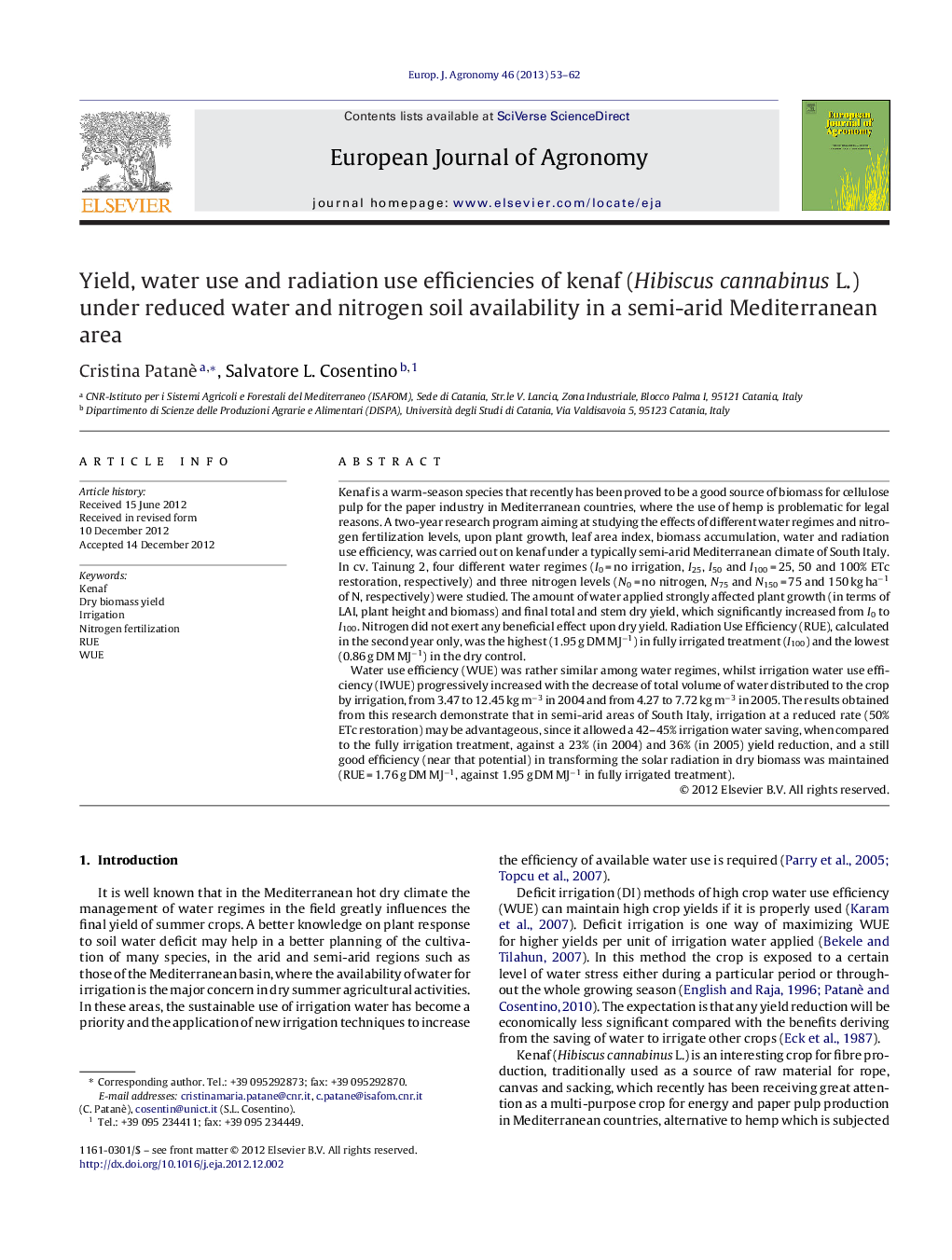| Article ID | Journal | Published Year | Pages | File Type |
|---|---|---|---|---|
| 4509121 | European Journal of Agronomy | 2013 | 10 Pages |
Kenaf is a warm-season species that recently has been proved to be a good source of biomass for cellulose pulp for the paper industry in Mediterranean countries, where the use of hemp is problematic for legal reasons. A two-year research program aiming at studying the effects of different water regimes and nitrogen fertilization levels, upon plant growth, leaf area index, biomass accumulation, water and radiation use efficiency, was carried out on kenaf under a typically semi-arid Mediterranean climate of South Italy. In cv. Tainung 2, four different water regimes (I0 = no irrigation, I25, I50 and I100 = 25, 50 and 100% ETc restoration, respectively) and three nitrogen levels (N0 = no nitrogen, N75 and N150 = 75 and 150 kg ha−1 of N, respectively) were studied. The amount of water applied strongly affected plant growth (in terms of LAI, plant height and biomass) and final total and stem dry yield, which significantly increased from I0 to I100. Nitrogen did not exert any beneficial effect upon dry yield. Radiation Use Efficiency (RUE), calculated in the second year only, was the highest (1.95 g DM MJ−1) in fully irrigated treatment (I100) and the lowest (0.86 g DM MJ−1) in the dry control.Water use efficiency (WUE) was rather similar among water regimes, whilst irrigation water use efficiency (IWUE) progressively increased with the decrease of total volume of water distributed to the crop by irrigation, from 3.47 to 12.45 kg m−3 in 2004 and from 4.27 to 7.72 kg m−3 in 2005. The results obtained from this research demonstrate that in semi-arid areas of South Italy, irrigation at a reduced rate (50% ETc restoration) may be advantageous, since it allowed a 42–45% irrigation water saving, when compared to the fully irrigation treatment, against a 23% (in 2004) and 36% (in 2005) yield reduction, and a still good efficiency (near that potential) in transforming the solar radiation in dry biomass was maintained (RUE = 1.76 g DM MJ−1, against 1.95 g DM MJ−1 in fully irrigated treatment).
► Different water and nitrogen levels were applied in kenaf in a semi-arid environment. ► Irrigation water use efficiency was enhanced under deficit irrigation regimes. ► Deficit irrigation (50% ETc) allowed a 42–45% water saving and a 23–36% yield reduction. ► With 50% ETc restoration RUE was as high (1.76 g DM MJ−1) as with 100% ETc (1.95 g DM MJ−1). ► Nitrogen did not exert any beneficial effect upon dry yield.
